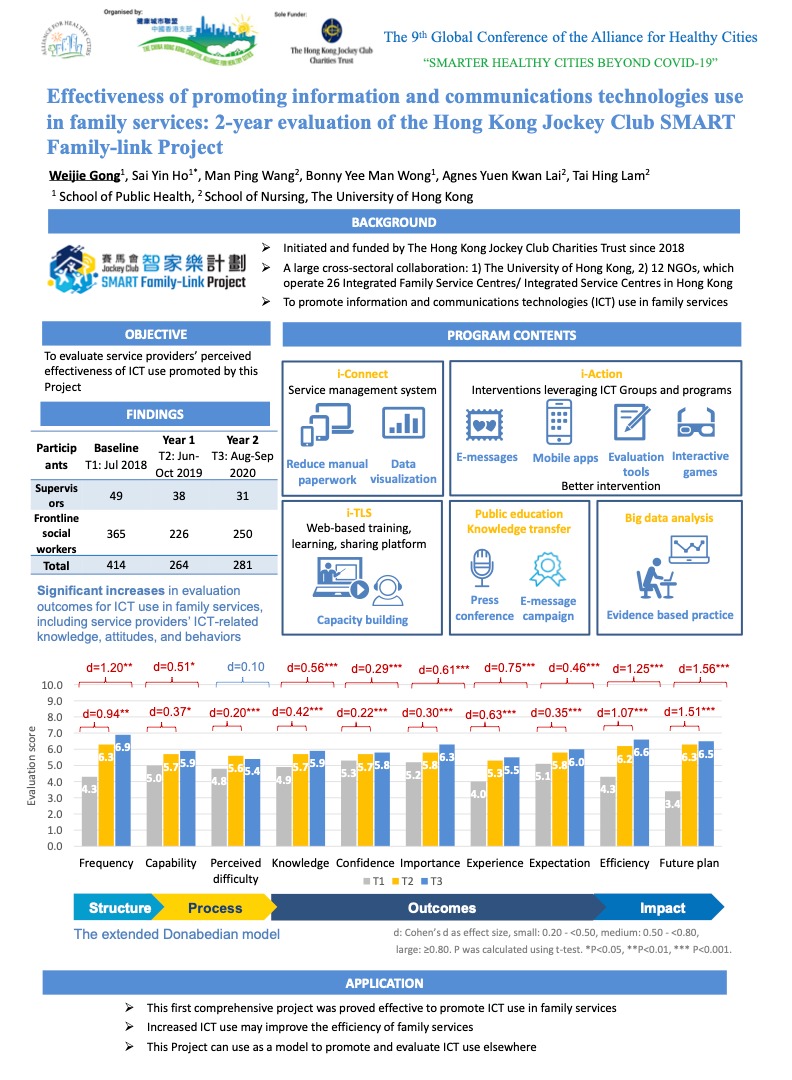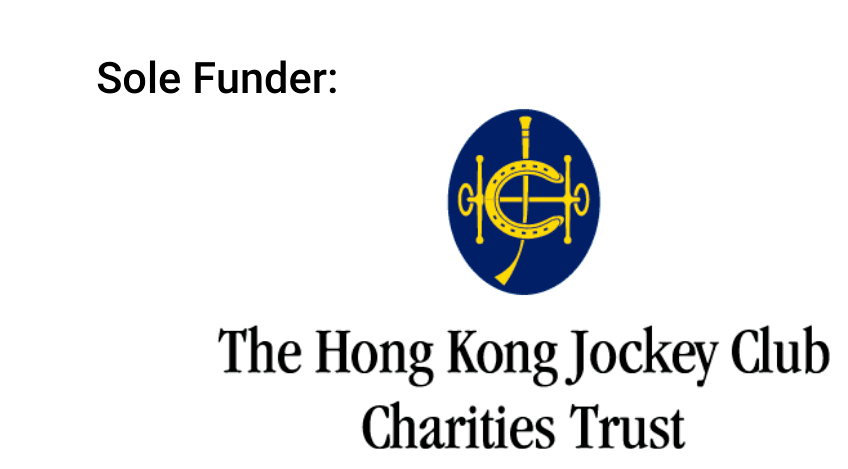Presenter 4: Effectiveness of promoting information and communications technologies use in family services: 2-year evaluation of the Hong Kong Jockey Club SMART Family-link Project

Effectiveness of promoting information and communications technologies use in family services: 2-year evaluation of the Hong Kong Jockey Club SMART Family-link Project
Background: The Hong Kong Jockey Club SMART Family-link Project is a large cross-sectoral collaboration between University of Hong Kong and 12 non-government organizations, which operate 26 Integrated Family Service Centres/ Integrated Service Centres to provide family services in Hong Kong. The Project aims to promote information and communications technologies (ICT) use in family services.
Objectives: To evaluate service providers’ perceived effectiveness of the Project.
Programme contents: This Project consists of
1) an electronic service management system (i-Connect) to reduce manual work; 2) a series of ICT tools (i-Actions) for better intervention, e.g. mobile apps and interactive games; 3) a web-based training, learning, and sharing platform (i-TLS) to improve service providers’ capacity; 4) various ICT-leveraged events for public knowledge transfer, e.g. e-message campaigns and press events; and 5) big data analysis to use service data for evidence-based practice. We conducted a repeated cross-sectional evaluation at baseline (T1: Jul 2018), 1-year follow-up (T2: Jun-Oct 2019), and 2-year follow-up (T3: Aug-Sep 2020) using the extended Donabedian model. Social workers from the 26 centres completed evaluation questionnaires using items on a scale of 0-10, with 10 being the best. T-tests and Mann-Whitney U tests were used for comparisons.
Findings: Totally 49, 38, and 31 supervisors and 365, 226, and 250 frontline social workers completed T1, T2, and T3 surveys, respectively. They reported higher scores in structure (frequency), process (perceived capability and difficulties), outcomes (knowledge, confidence, satisfaction, and experience), and impact (expectation, efficiency, and future plan) of overall ICT use in case counselling and groups/programmes at T3 and T2 than T1 (mean scores: T3: 3.7-6.0, T2: 3.0-5.9, vs T1: 2.1-5.6, all P≤0.045, Cohen’s d≥0.19), and larger percentages of perceived having some (score 1-5) and large increases (score 6-10) in the efficiency of 10 service tasks at T3 than T2 (T3: some 49.1-56.0%, large 19.9-33.0% vs T2: some 58.3-78.0%, large 22.0-38.3%, all P≤0.001, Cohen’s w≥0.22).
Conclusions: This first comprehensive project was proved effective to promote ICT use in family services, with various evaluation outcomes using the extended Donabedian model, including ICT-related knowledge, attitudes and behaviours.


